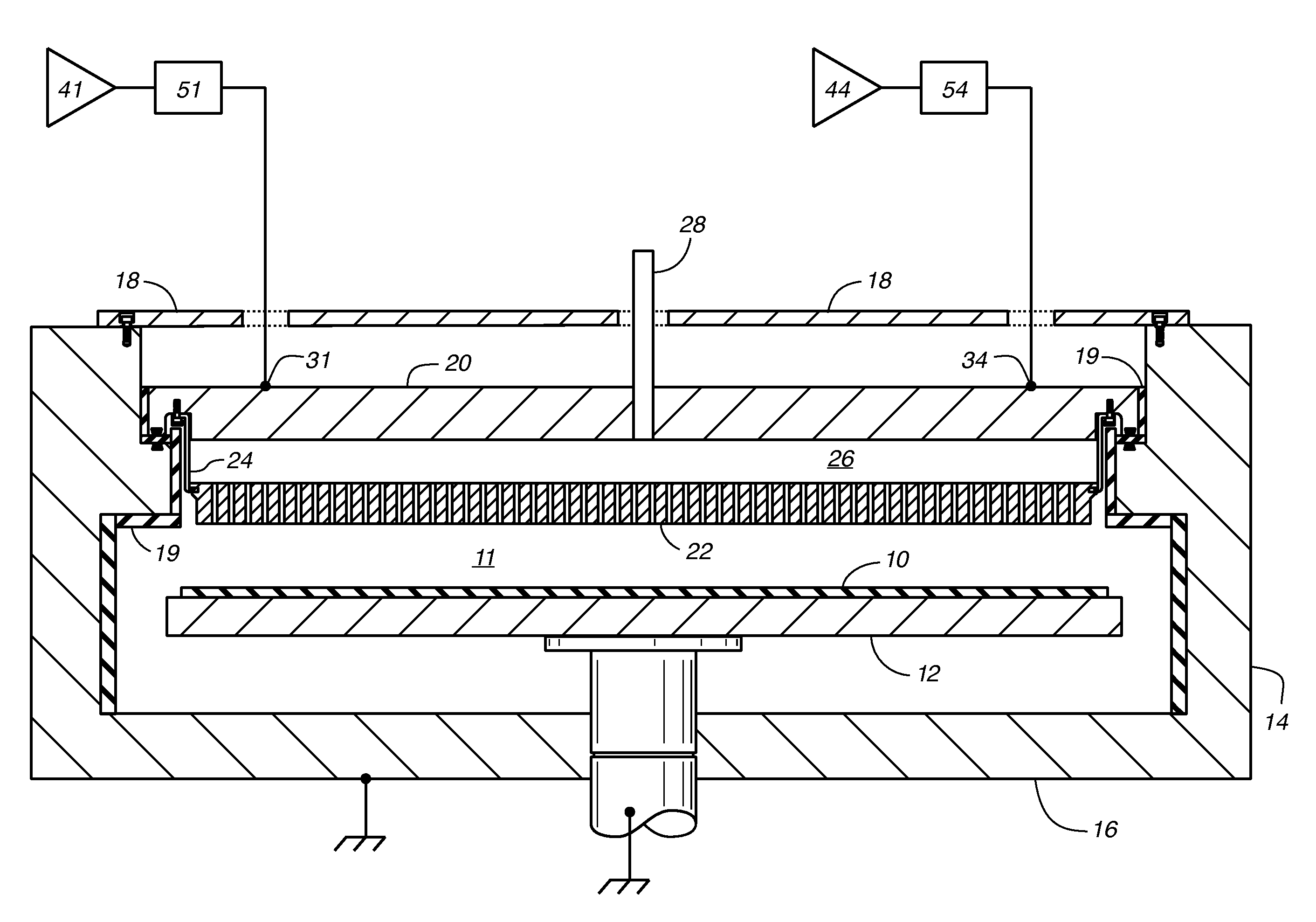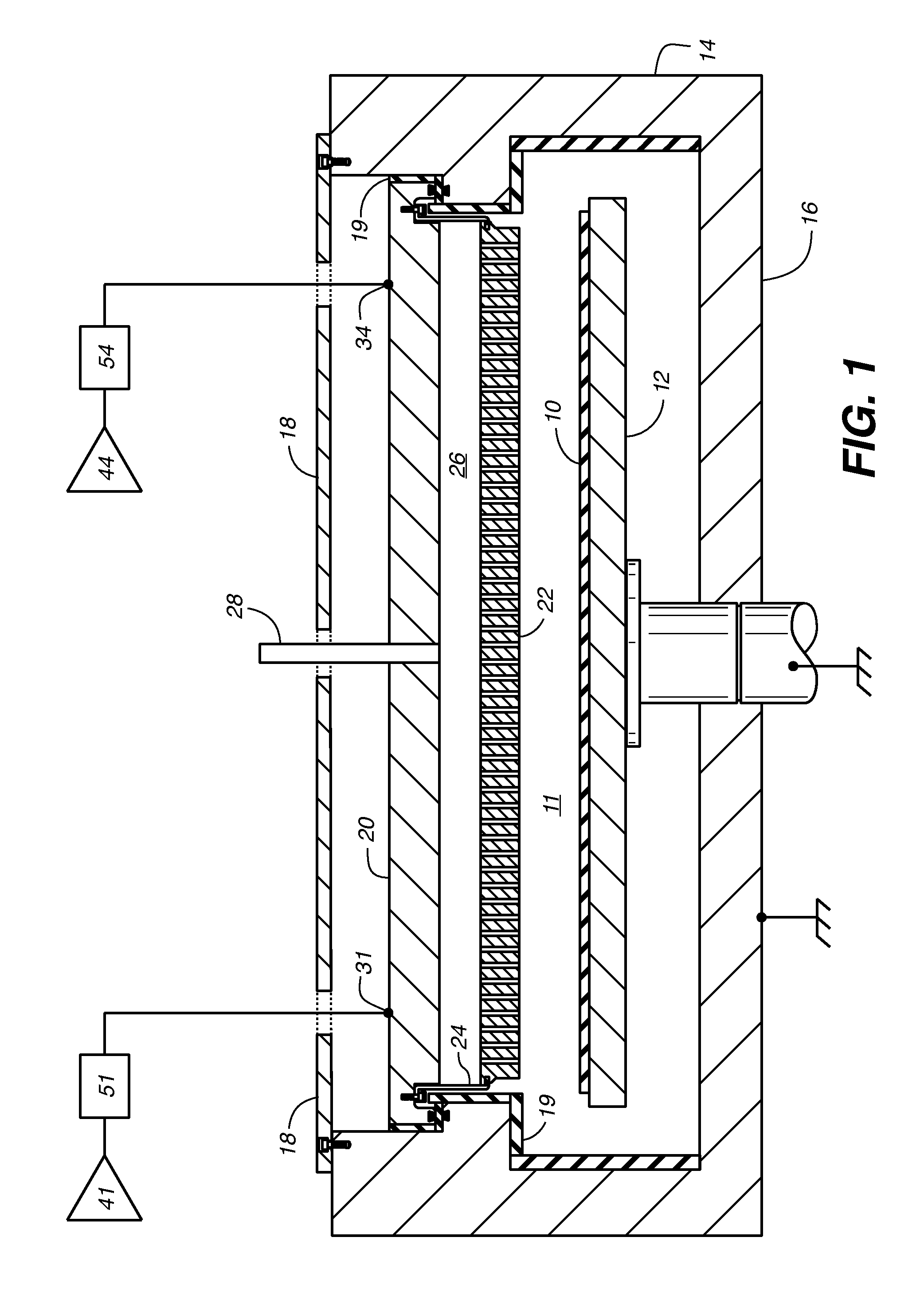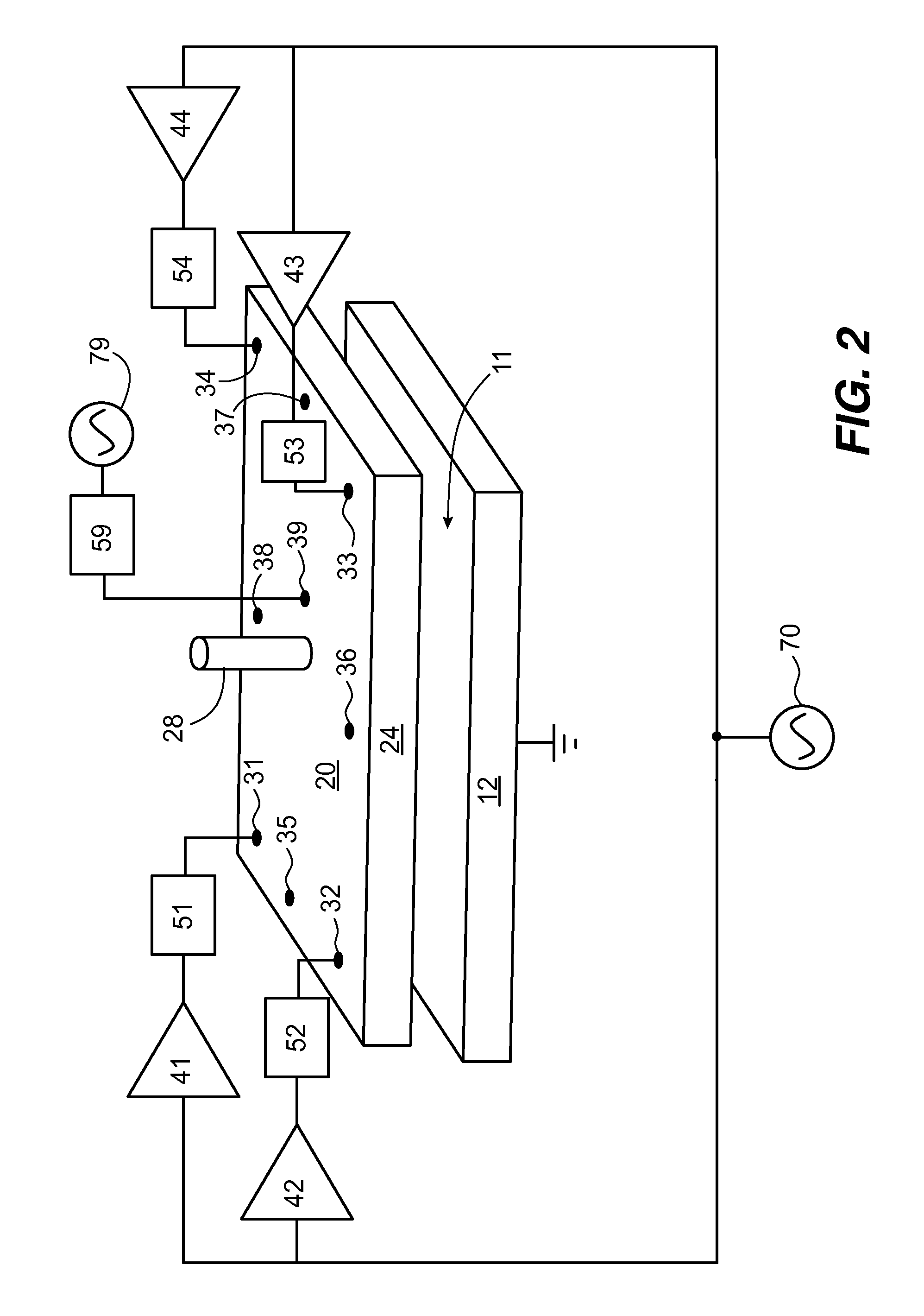Phase-Modulated RF Power for Plasma Chamber Electrode
a plasma chamber electrode and phase-modulated technology, applied in the field of phase-modulated rf power for plasma chamber electrodes, can solve problems such as spatial non-uniformity
- Summary
- Abstract
- Description
- Claims
- Application Information
AI Technical Summary
Benefits of technology
Problems solved by technology
Method used
Image
Examples
first embodiment
[0046] or first aspect of the invention summarized in the above “Summary of the Invention”, at least all but one of the phase modulation functions Φ1(t) is a distinct, periodic function of time characterized by a repetition period. In other words, Φi(t)=Φi(t+1 / Fi) and, where (1 / Fi) is the repetition period of the i-th phase modulation function. We refer to Fi as the “phase modulation repetition frequency” (or simply the “phase modulation frequency”) of the i-th phase modulation function Φi(t).
[0047]The reason that one of the phase modulation functions is not required to be a periodic function of time is that the spatial distribution of the RF electric field produced by the RF power signals is a function of the phases of the RF power signals relative to each other. If one of the RF power signals has a constant or zero phase offset relative to the reference RF signal, each of the other RF power signals will still have a time-varying, periodic phase offset relative to said one RF power...
second embodiment
[0067]The second embodiment or second aspect of the invention summarized in the above “Summary of the Invention” includes an additional RF power source 79 that outputs an RF power signal having a second RF frequency that is lower than the reference RF frequency f. A lower frequency RF power signal generally produces an electric field spatial distribution having more widely spaced instantaneous peaks and minimums in comparison with a higher frequency RF power signal. Therefore, by coupling lower frequency RF power to the plasma, the additional RF power source can increase the plasma density at one or more locations of instantaneous or time-averaged minimums in the interference pattern produced by the multiple RF power sources 41-44 at the higher first frequency. In the absence of such lower frequency additional RF power source 79, we found that instantaneous minimums could possibly make the plasma less uniform, depending on the operating conditions of the plasma chamber.
[0068]The out...
PUM
| Property | Measurement | Unit |
|---|---|---|
| RF power | aaaaa | aaaaa |
| RF frequency | aaaaa | aaaaa |
| first phase offset | aaaaa | aaaaa |
Abstract
Description
Claims
Application Information
 Login to View More
Login to View More - R&D
- Intellectual Property
- Life Sciences
- Materials
- Tech Scout
- Unparalleled Data Quality
- Higher Quality Content
- 60% Fewer Hallucinations
Browse by: Latest US Patents, China's latest patents, Technical Efficacy Thesaurus, Application Domain, Technology Topic, Popular Technical Reports.
© 2025 PatSnap. All rights reserved.Legal|Privacy policy|Modern Slavery Act Transparency Statement|Sitemap|About US| Contact US: help@patsnap.com



